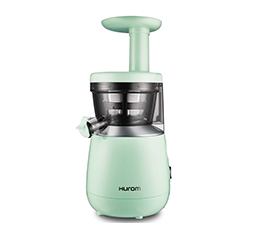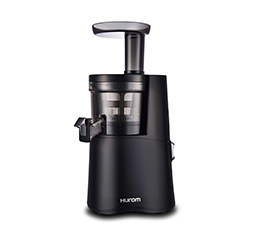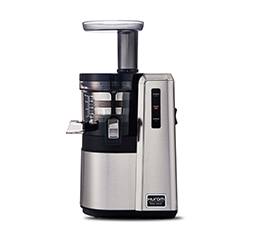The 4-Step Guide to Becoming an at-Home Juicing Master
Turns out, replicating those delish bevs at home isn't as hard as it seems—if you have the right tools. We tapped Eun Kyoung Lee, product development manager at Hurom HQ, to give us the 411 on exactly how to create good-for-you juices—without cutting into your yoga class budget.
"Juicing is a convenient and quick way to consume large amount of veggies and fruits at once," Lee says (score one for your plant-based #goals).
"Juicing is a convenient and quick way to consume large amount of veggies and fruits at once," Lee says (score one for your plant-based #goals). But quicker isn't actually better when it comes to how your juice is made—even if you do slurp it down in five minutes.
"High-speed blades in blenders cause friction heat which oxidizes juice, reducing nutrients," Lee says. "Hurom slow juicers rotate at just 43 RPM, mimicking the motion of hand-squeezing a fruit, and keeping the natural taste and nutrients intact." Once you have your juicer sorted, it's time to fill it up. Welcome to Juicing 101.
Scroll down for the four key pieces of advice to make at-home juicing a breeze.
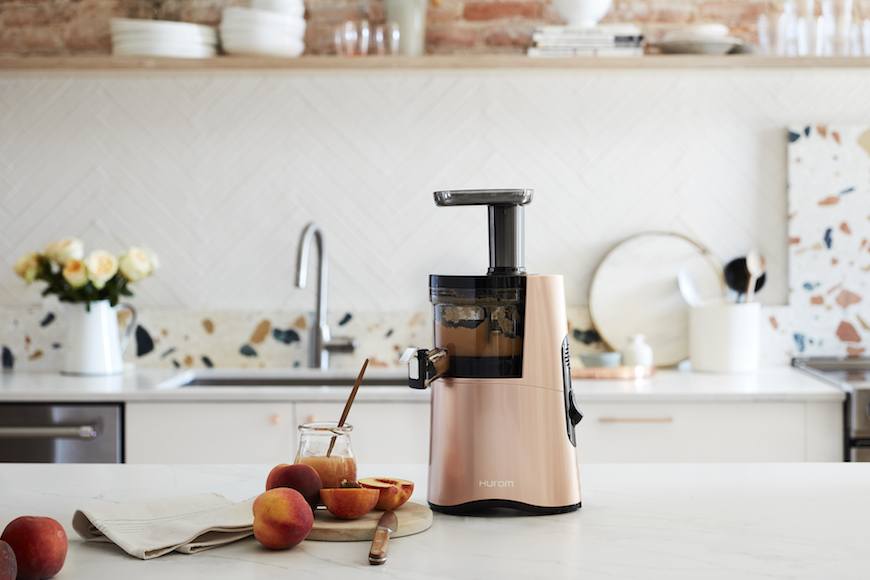
1. Ditch the myths
Raise your hand if you've heard juice haters say that juicing throws away the best parts of the fruit (AKA the fiber). That's actually not the case with a Hurom juicer, Lee says.
"Hurom juicers remove fibrous pulp from juice, which actually helps your body to better absorb nutrients, including fiber," Lee says. "Fibrous pulp hinders the body’s nutrient absorption because it flushes out of the system easily and quickly."
There's a ton of scientific research behind how Hurom elevates juice, but according to Lee, a key difference is that nixing the pulp means you're getting all the juicy goodness out of your libation—down to the last drop.
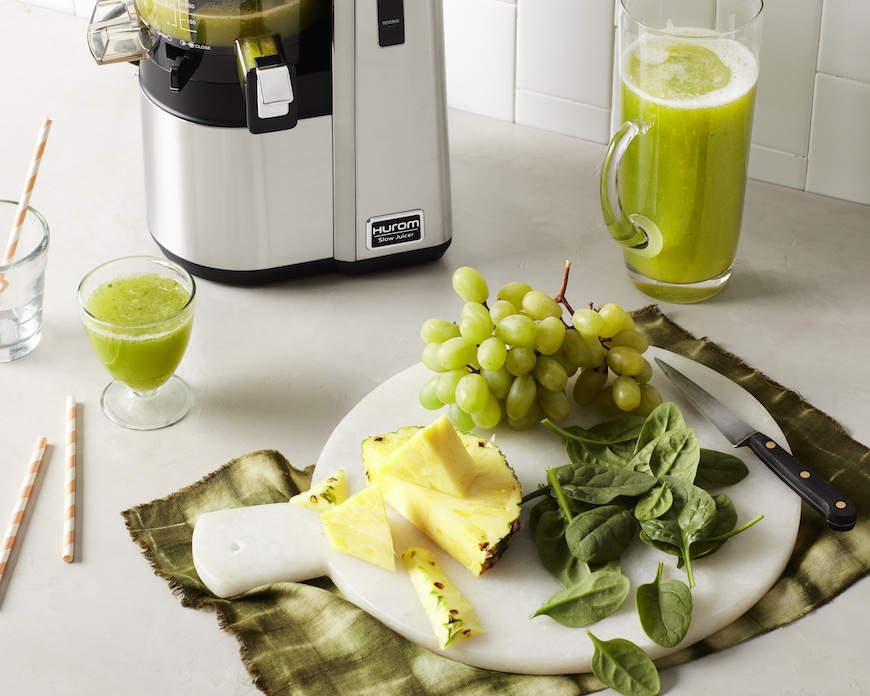
2. Be picky about produce
You might not think the look of that spinach you're juicing matters, since it's all getting liquified anyway—but ingredient quality actually plays a huge role in the way your finished product tastes.
"Ingredients that are old or have gone bad lack sweetness, and would have dried out of water," Lee says. "So juicing low quality produce may yield less juice, and it wouldn’t be as tasteful and healthy."
She recommends picking seasonal produce to ensure it's loaded with fresh nutrients—and to make sure the taste is up to your master juicer standards.
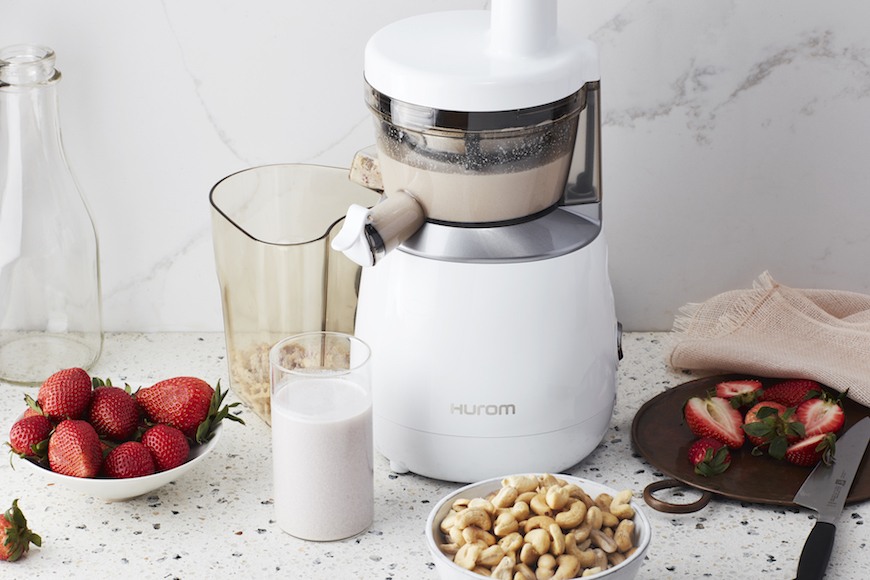
3. Follow the directions
While the slow juicing process isn't actually slow (it takes just as long to turn a bowl of berries into a delicious beverage in a slow juicer as it does in a high-speed blender), you shouldn't just throw all your ingredients into the machine and hope for the best.
Some rules of thumb: Use about 500 grams of fruit to make one juice (so about two oranges, one large pear, and two and a half carrots) and don't skimp on prep—remove any seeds or skin you can't chew, and cut every piece of produce (including leafy greens) into one- to two-inch pieces to ensure maximum juice yield.
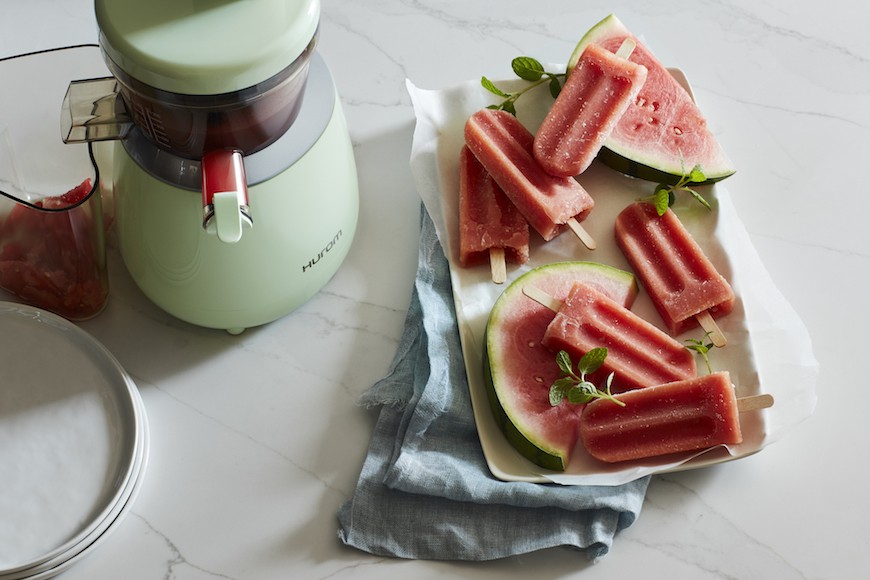
4. Be creative
Don't limit yourself to orange juice or other single-fruit flavors. Lee encourages newbie juicers to think outside the box with ingredient combos (or to hit up a recipe book if you're really stumped).
Start your juicing journey with ingredients that are manageable for beginners (Lee suggests starting with water-based ingredients like apples, pears, oranges, and tomatoes), and mix them with more unexpected ones like leafy greens, ginger, lemon, and fresh herbs.
The finished product will be packed with the good stuff, and just as palatable as your expensive store-bought sip. We'll drink to that.
In partnership with Hurom
Photos: Hurom
Loading More Posts...
